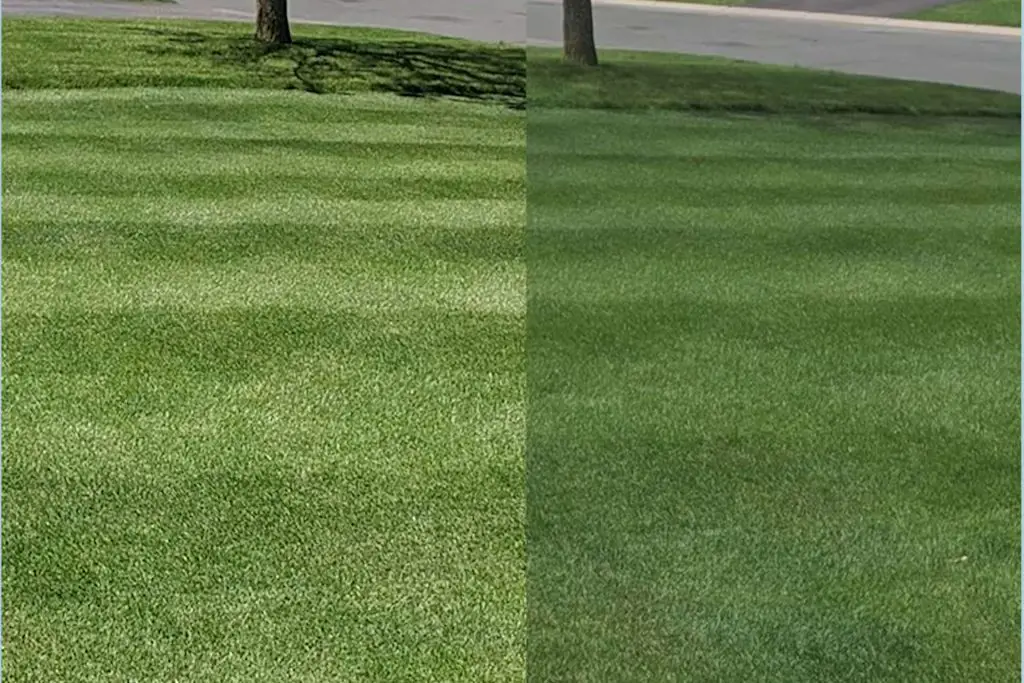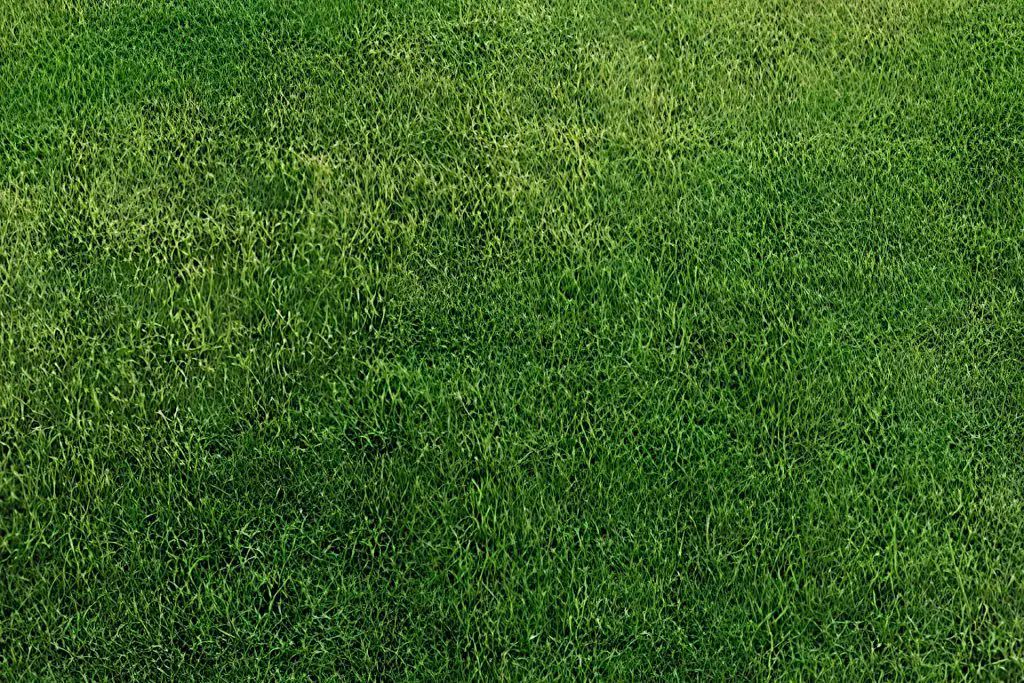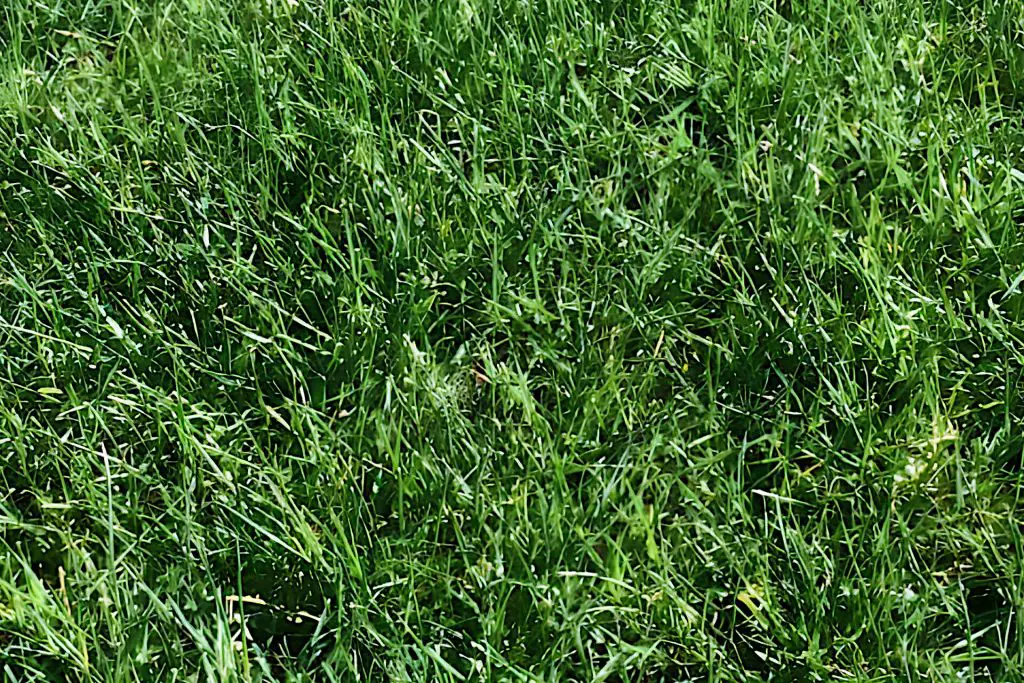What Makes Your Grass Greener? Creating a Dark Lush Green Lawn
Ever peek out your window only to be met by the glaring green envy of your neighbor’s lawn? We’ve all been there. Maybe your grass seems more like a tired straw mat than a vibrant emerald carpet. Fear not, fellow lawn warrior! A lush, green haven is within reach, no magic spells required.
The truth is, achieving that picture-perfect yard comes down to a little bit of science and some simple know-how. With the right knowledge and effort, you can transform your sad patch of earth into the envy of the neighborhood. So, grab your gardening gloves (or maybe a metaphorical battle axe – we’re going to war on lackluster lawns!), because it’s time to cultivate a green masterpiece!
The green color of grass is caused by chlorophyll. Chlorophyll levels determine the depth of the green color in grass. The best ways to increase chlorophyll levels in your grass are to ensure the levels of iron, magnesium, and nitrogen are optimal, which can be done by adding various amendments regularly, and to water and mow on a regular schedule.
What Makes Your Grass Green?

If you’re looking to create a dark green, lush lawn, understanding grass green pigment and chlorophyll is key. Chlorophyll is what gives plants their green color, and it’s also responsible for helping the plant convert sunlight into energy. In terms of grass, a higher chlorophyll content results in a darker green color.
The Science Behind The Green Color of Your Grass
Have you ever wondered why some blades of grass seem to glow with an almost magical green? It’s not sorcery, my friend, but a tiny superhero hiding within – chlorophyll! Think of chlorophyll as millions of microscopic solar panels scattered throughout the grass. These amazing pigments capture sunlight, the ultimate source of power for plants1. But chlorophyll doesn’t just hoard the sunshine for itself. It uses that captured energy to fuel a fantastic process called photosynthesis.2
Imagine photosynthesis as a high-tech kitchen where sunlight, water, and carbon dioxide are the ingredients. Chlorophyll, the head chef, uses the sun’s energy to whip these ingredients up into a delicious meal – glucose, the plant’s food source! It’s this constant production of food, fueled by chlorophyll, that keeps the grass healthy, vibrant, and, of course, green! So next time you admire a lush lawn, remember, it’s all thanks to the tireless efforts of millions of tiny chefs working tirelessly beneath the surface.
Interestingly, the amount of chlorophyll in a plant can fluctuate depending on the season. In the spring and summer, when the weather is warm and there’s plenty of sunlight, plants produce more chlorophyll. They use this extra pigment to perform more photosynthesis and produce more food. In the fall, when the days start getting shorter and the weather gets cooler, plants produce less chlorophyll. This is because they don’t need to produce as much food.
How Do You Encourage Grass to Produce More Chlorophyll?

For your lawn to be able to have the deepest possible green color it needs producing more chlorophyll in the grass blades is essential.
Just like comic book superhero teams your lawn needs a variety of powers to succeed. In a lwns case the right balance of essential nutrients to achieve its green potential. We’re talking about a trio of titans: nitrogen, iron, and magnesium. Each plays a crucial role in keeping your grass healthy and vibrantly green.
Nitrogen, the Powerhouse:
Think of nitrogen as the muscle on your lawn. It promotes strong growth and lush green foliage. Without enough nitrogen, your grass might start to look pale and yellow, struggling to reach its full potential.
Iron, the Master of Color:
Iron plays a vital role in chlorophyll production, the secret weapon we discussed earlier. If your lawn is lacking iron, it might develop iron chlorosis, a condition that causes the grass to turn yellow even though it might have sufficient nitrogen.
You can encourage grass to produce more chlorophyll by applying iron to the soil. This is done through a process called chelation, where the iron is bound to an organic molecule. This makes it easier for the plant to take up the iron and use it to create chlorophyll.
Magnesium, the Green Machine’s Mechanic:
Magnesium acts like the unsung hero, working behind the scenes to ensure chlorophyll functions properly. It also helps with photosynthesis and strengthens cell walls. A magnesium deficiency can lead to stunted growth and yellowing between the leaf veins.
There are several ways of adding magnesium, lime being one of the most straightforward. Some fertilizers also include it, however, lime also has the benefit of dealing with acidic soil.
If using lime Dolomite lime is an excellent source. The magnesium content of dolomitic lime is significantly higher than that of other types of lime because it is produced from deposits of calcium and magnesium carbonates. The pH of the soil and the magnesium content of the soil are the most important considerations to make when choosing how to boost magnesium levels.
Soil Test
But how do you know if your lawn’s Green Dream Team is missing a member? A simple soil test can analyze your soil’s nutrient levels and recommend the perfect fertilizer blend to create a balanced and thriving lawn. Just like you wouldn’t send your favorite superhero into battle without the right equipment, don’t expect your lawn to achieve its green glory without the essential nutrients it needs!
The secret to producing more chlorophyll and achieving greener grass is to provide your law optimal growing conditions and supplement it with the right nutrients to boost chlorophyll levels. However, there is also a danger of being over-aggressive with amendments and ending up ruining your lawn. Therefore the process should always start with a soil test as regular soil analysis is essential to maintaining healthy soil.
Other Nutrients
There are 13 different mineral nutrients and macronutrients that play an important part in the life of plants. To achieve a lush green grass color it is important to ensure that these elements are present in sufficient quantities in the soil.
In order to do this, you will need to apply slow-release fertilizer or compost to the soil. These fertilizers contain the minerals that are required to promote healthy growth.
Different Grass Types

Another factor that has considerable bearing on the color of your lawn is the type of grass that you have, as different varieties of grass have different natural colors.
If you are looking to put down a new lawn this is something that is easier to control. If you already have a lawn then you can look to maximize the color of the grass you have by embarking on a gradual process of overseeding.
Overseeding to Improve The Color of Your Lawn
If you want to improve your lawn color overseeding is a good way to do it. You can blend in subtle changes using a careful mix of varieties. Research your current grass variety and which if you scarify before overseeing should produce a deeper green over a couple of growing seasons.
Problems with Overseeding to Improve Lawn Color
The main problem with this technique is if you are looking for a radical change in color. In some ways, the only thing more unsightly than dead spots on a lawn is a collision of vastly different shades of grass. In addition, it is important to ensure the viability of your grass seed to ensure the best quality of growth.
If your goal is a drastic deepening of color then it may be better to just remove the existing lawn and lay new sod, or hydroseed or seed. The approach you take is likely to be down to time and budget.
Deepest Green Grass Varieties
Cool-season grass tends to have a deeper green color than warm-season grass and some varieties of grass have a richer green color than others.
In terms of cool-season grass you will find that Kentucky bluegrass has a particularly deep and rich shade of green. It is therefore very popular among homeowners but is one of the more expensive options.

An alternative is perennial ryegrass. This provides a good deep green lawn that retains its color all year round. Ryegrasses tend to have very high chlorophyll levels, so they’ll give your lawn that deep green color you’re after. If you are considering a seed mix then go for mixes containing mostly or all ryegrasses.
In terms of warm-season grass, the best greens come from the zoysia variety, particularly zoysia zeon, which has a notable dark green color3.
Alternatives to zoysiagrass include Bermuda grass which is hardy and popular but does have a tendency to turn brown during winter months.
General Lawn Care
Having gone through all the trouble of selecting the right type of grass and adding the correct amendments to boost chlorophyll, your lawn still requires moisture and oxygen to survive and keep your lawn green. These are determined by how you care for your lawn. Regular and proper lawn maintenance will have a significant impact on the green color of your grass.
Water Your Lawn
Forget the dusty hose and random sprinkling sessions – watering your lawn is a strategic mission for true Green Guardians! Here’s how to ditch the guesswork and become a master hydrator:
- Most people think watering is about frequency, but it’s actually about delivering water directly to the roots, where it’s needed most. Avoid midday watering when the sun is a thirsty vampire, sucking up moisture before it reaches the roots. Instead, aim for the cooler hours of the early morning or evening.
- Weather plays a significant role in watering needs. During hot, dry spells, your lawn will need more frequent drinks than on cool, rainy days. Be observant! Signs of dehydration like wilting or footprints lingering in the grass are your lawn’s way of saying, “Hey, I’m parched!”
- Instead of blindly guessing how much water is enough, employ some intel-gathering techniques. Invest in a rain gauge to measure rainfall and adjust your watering schedule accordingly. You can also use shallow tuna cans placed around the yard to measure how much water your sprinkler actually delivers. Aim for about an inch of water per week to soak the root zone effectively.
Don’t overwater your lawn. Too much water or poor water drainage can actually damage the roots of your grass, making it more susceptible to disease and pests. The controlling factor in how often you water should be soil moisture levels which should be between 21-40%, depending on the soil type.
Mowing Mastery: The Art of a Perfect Cut

Mowing might seem like a straightforward task, but true mowing mastery lies beyond simply pushing a machine back and forth. Here’s how to elevate your mowing game and achieve that coveted, uniform cut:
- Know Your Grass Type: Just like you wouldn’t give your poodle the same haircut as a Saint Bernard, different grass types have different height preferences. Warm-season grasses like Bermuda generally thrive at a higher mowing height (around 1-2 inches) compared to cool-season grasses like Kentucky bluegrass (which prefer a height of 2.5-3.5 inches). Mowing at the right height promotes healthy growth and discourages weeds.
- Sharpness is Your Secret Weapon: A dull mower blade tears and rips grass, leaving it vulnerable to disease and giving your lawn a ragged appearance. Think of a sharp blade as a skilled barber – it delivers a clean, precise cut that promotes healthy growth. Make sharpening your mower blades a regular part of your lawn care routine.
- Scalping is the Enemy: Resist the urge to mow your lawn super short. While it might seem like a time-saver, scalping (mowing too low) weakens the grass, exposes the roots to harsh sunlight, and creates an environment for weeds to thrive. Aim for a gradual removal of no more than one-third of the grass blade at a time.
- Become a Mowing Maestro: Mowing in straight lines might seem efficient, but it can lead to unsightly patterns and uneven growth. Instead, become a mowing maestro! Change directions every time you mow the lawn. This helps the grass stand more upright and prevents soil compaction. You can also try creating a mow-at-a-diagonal pattern for a more professional-looking finish.
Mastering the art of mowing is a key component for promoting healthy grass growth. Achieving a beautiful, uniform cut, result in a more resilient lawn. Remember, sharp blades, the right height, and a strategic approach are the keys to mowing mastery.
Breathing Easy: The Power of Aeration
Aerating your lawn is an important part of the process of achieving a healthy green lawn. Your lawn might seem like a simple carpet of green, but beneath the surface lies a complex ecosystem teeming with life. Just like you and I need air to breathe, the roots of your grass also crave oxygen for healthy growth. This is where aeration comes in, the often-overlooked hero of healthy lawns.
Think of aeration as giving your lawn a deep breath. It involves creating small holes or channels in the soil, allowing air, water, and essential nutrients to penetrate deeper and reach the grass roots more effectively. Here’s why aeration is a secret weapon in your lawn care arsenal:
- Bye-Bye Compaction: Over time, foot traffic, heavy equipment, and even raindrops can compact the soil. This dense layer acts like a barrier, preventing air, water, and nutrients from reaching the roots. Aeration breaks up this compaction, allowing your lawn to breathe easier.
- Drainage Dynasty: Compacted soil also hinders proper drainage. Aeration helps excess water drain more efficiently, preventing problems like puddling, root rot, and fungal diseases. A well-aerated lawn thrives even during periods of heavy rain.
- Nutrient Flow: When air and water can flow freely through the soil, they carry essential nutrients along with them. Aeration helps deliver these nutrients directly to the roots, where they can be readily absorbed by the grass. This translates to a healthier, greener lawn that’s better equipped to fight off weeds and pests.
Aeration might not be the flashiest lawn care technique, but its benefits are undeniable. Imagine your lawn as a hardworking athlete – aeration is like giving them the oxygen and fuel they need to perform at their best. Consider aerating your lawn once or twice a year, especially in areas with heavy traffic or compacted soil. With a little extra air, your lawn will be thanking you for a long time to come!
Shade
The final element to consider is light, as we have already noted light plays a crucial role in the development of chlorophyll. This means that shady areas of a lawn might struggle to generate the depth of green that non-shaded areas do. It is important, therefore, to cut back overhanging foliage as much as possible. If this is not possible look to choose a grass variety, such as fescue, that enjoys shady conditions.
Bonus Tips for Lawn Domination: Conquering the Green Frontier
Conquering the green frontier and achieving lawn domination isn’t just about the big three – mowing, watering, and feeding. Here are some bonus tips to keep your lawn looking like a champion’s:
Weeds: Eradicating the Enemy:
Weeds are like the pesky villains in your lawn’s superhero story, stealing precious nutrients and water from your grass. Regularly patrolling your lawn and identifying weeds early is key. Spot treatment with herbicide or natural weed control methods can help keep these unwanted guests at bay. Remember, a healthy, dense lawn is the best defense against weed encroachment.
Pest Patrol: Protecting Your Green Oasis:
Just like any thriving ecosystem, your lawn might attract unwanted pests like grubs or chinch bugs. Learning to identify common lawn pests and their signs of damage is crucial. Natural methods like introducing beneficial insects or using insecticidal soap can be effective for mild infestations. For more serious pest problems, consider consulting a lawn care professional.
Know Your Region’s Lawn Woes:
Every region has its own unique set of lawn challenges. Research common lawn diseases specific to your area. Early detection and treatment with fungicides or natural solutions can prevent these diseases from spreading and ruining your green masterpiece.
Final Thoughts:
Achieving a lawn that makes your neighbors drool isn’t about a magic potion or overnight transformation. It’s a process of understanding your lawn’s needs, providing the right care, and celebrating the small victories along the way.
However, creating a dark green, lush lawn does not have to be difficult. By understanding why grass is green and following some simple tips, you can have a beautiful lawn that is the envy of your neighborhood. Grass gets its green color from the pigment chlorophyll. Chlorophyll is important because it helps plants convert sunlight into energy. The best ways to get a greener lawn are to mow high, water deeply, add the correct amendments, and fertilize when needed.
So, next time you’re out enjoying the warm weather and cut your lawn, remember that it’s the chlorophyll in the grass that’s responsible for its green color.
